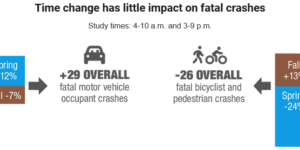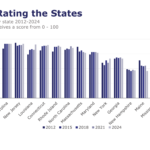 Predictive modeling is becoming even more widespread among U.S. property/casualty insurers, with rapid gain likely in the coming years for commercial lines carriers.
Predictive modeling is becoming even more widespread among U.S. property/casualty insurers, with rapid gain likely in the coming years for commercial lines carriers.
The big news: Two-thirds of the P/C carriers now use predictive modeling for underwriting and risk selection, according to Willis Towers Watson’s 2016 Predictive Modeling Survey. That’s a 10 percent hike over 2015.
As Willis Towers Watson noted, personal lines carriers are using predictive modeling aggressively, but commercial lines carriers are making serious investment in predictive modeling in a number of areas. More commercial lines insurers plan to build their predictive modeling capabilities over the next two years, according to the report. Examples:
- 15 percent use predictive modeling for claims tried now, but 66 percent of respondents plan to within two years.
- 14 percent say they currently rely on the technology for fraud potential, but 55 percent plan two in two years.
- 10 percent of respondents say the technology is a tool for litigation potential, but 50 percent plan to have it in two years.
- 8 percent of commercial lines insurers use predictive modeling for case reserving, but 48 percent plan to within the next two years.
Strategic Benefits Plentiful in Predictive Modeling Embrace
J.J. Ihrke, Willis Towers Watson senior consultant and actuary, said that the expected commercial lines predictive modeling gains are noteworthy for the market.
“The survey findings suggest that these could become increasingly important areas for performance differentiation, building on what many commercial lines carriers believe models have already helped achieve,” he said in prepared remarks.
But to keep using predictive models, carriers must tap into the value of big data, and they are on the right track in this area, Willis Towers Watson said. Consider:
- 92 percent of insurers said big data will help them with pricing, underwriting and risk selection over the next two years.
- 84 percent said big data will be a tool to make better management decisions.
- 76 percent of respondents said big data will assist with loss control and claim management efforts.
As Ihrke said however, unlocking the value of big data in the quest to weld predictive modeling will take some investment.
“This is contingent upon investments insurers are willing to make,” he said, “as the degree to which carriers characterize themselves as data-driven has significant bearing on how aggressive they are in employing analytics.”
Early signs show that carriers are already embracing big data in some impressive ways. Big data options from vehicle telematics and the Internet of Things are already giving insurers opportunities, Willis Towers Watson said. Some of their actions: 100 percent of personal auto carrier respondents said they will get much more driving data from connected cars, 75 percent said they would do so from apps, and 65 percent expect to gain more data from telecoms over the next five years.
At the same time, respondents said they see obstacles ahead. Among the trouble spots:
- 51 percent of respondents said insurance companies often don’t have employees properly trained to maximize big data usage.
- 37 percent worry about capturing the right data.
- 35 percent worry about cost considerations and funding.
- 33 percent said they’re concerned about data quality and reliability.
But a majority of insurers said they plan to implement training and hire employees with the right skills. Sizable minorities said they’d seek third party advice and outsource the skills they need.
For the survey, Willis Towers Watson asked U.S. P/C insurance executives how they use or plan to use predictive analytics and big data. The survey was fielded from September 7 to October 24, 2016. Respondents comprise 14% of U.S. personal lines carriers and 20% of commercial lines carriers.
Source: Willis Towers Watson





















 Allstate’s Safe Driving App Helps Reduce Chance of Collision by 25%
Allstate’s Safe Driving App Helps Reduce Chance of Collision by 25%  Study: U.S. Companies Facing Class Actions at Highest Level in 13 Years
Study: U.S. Companies Facing Class Actions at Highest Level in 13 Years  IBHS: Virginia Edges Florida Out of First Place in Building Code Adoption
IBHS: Virginia Edges Florida Out of First Place in Building Code Adoption  USAA to Lay Off 220 Employees
USAA to Lay Off 220 Employees 




